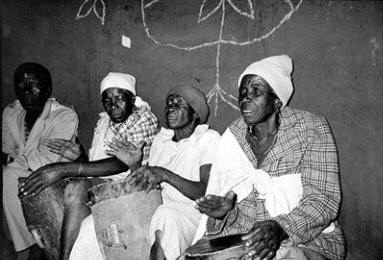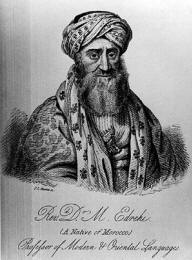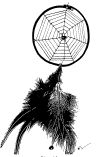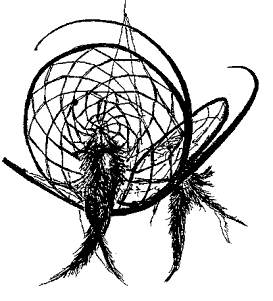Japan
The Japanese have
been considered by some early travelers and explorers to be descendants of
the Ten Lost Tribes. This theory was formulated by N. McLeod, a Scottish
missionary who arrived in Japan in 1867. McLeod detailed his observations,
interpretations and speculations in Epitome of the Ancient History of
Japan, a book published in Nagasaki in 1875. He described what he
thought to be proofs of the origin of the Japanese people from the Ten Lost
Tribes. He endeavored in an elaborate way to reconstruct and explain the
ancient Japanese history according to his interpretation of the Bible and
its sacred history. McLeod's ideas were adopted by a number of European
Christian missionaries, but they also became popular with some Japanese,
especially among those who converted to Christianity. Bishop Juji Nakada
(1869-1939), of the Holiness Church Movement, Dr. Zen'ichiro Oyabe, and Dr.
Chikao Fujisawa, a lecturer at Nihon University, were among the most
outspoken supporters of the theory linking the origin of the Japanese people
to the Ten Lost Tribes. They described their findings and beliefs in books
published in Japan during the first half of the 20tyh century.
British Isles
The supposed
connection between the people of the British Isles and the Ten Lost Tribes
started with the ideas of Richard Brothers (1757-1824). This Canadian-born,
self-proclaimed prophet, who spent his later years of life incarcerated in a
lunatic asylum, founded a millenarian movement that towards the end of the
18th century attracted many adherents in England. According to
Brothers, salvation would include the Jews' return to the Land of Israel,
including that of the Ten Lost Tribes. In his opinion descendants of the Ten
Lost Tribes can be found among the inhabitants of the British Isles. This
idea was later on developed by John Finleyson, a Scottish lawyer, in a book
he published in 1849, by Ralph Wedgwood, in a separate book published in
1814, and William Henry Poole (b. 1820) in Anglo-Israel; The Saxon race
proved to be the lost tribes of Israel (Toronto, 1889). However, it was
John Wilson (d.1871), an Irishman, who turned these ideas into the movement
of British Israelism. He and his followers strove to discover and describe
the historic connection between the Ten Lost Tribes and the British people,
via various waves of migrations and immigrations from Central Asia to the
north shores of the Black Sea and ultimately to Britain. The movement
consequently gained many adherents in Britain and from there it spread to
other English speaking countries, especially to the US. British Israelism
continued to flourish in the first half of the 20th century and
still has followers in many countries.
Jewish Communities and the Ten
Lost Tribes
Traditions and
legends speaking about a supposed origin from the Ten Lost Tribes can be
found among various Jewish communities in the Diaspora and immigrants to
Israel. The contacts that could be established between European Jewish
communities and non-European Jewish communities in Asia and Africa in the
modern ages, led to an increased curiosity into the origin and traditions of
some Jewish communities living at the outskirts of the traditional area of
settlement of the Jewish communities during the Middle Ages and early modern
times. For instance, the Jews of Bukhara, in Central Asia, a region that at
the beginning of the 19th century came under Russian domination,
received in 1802 a letter from the Jews of Shklov, in Lithuania, then part
of the Russian Empire, asking them whether they were descendants from the
Ten Lost Tribes.
One of the
traditions of the
Bene Israel community of India asserts that this community descends from
the tribe of Judah, while according to a concurrent tradition the
Bene Israel are descendants from the tribe of Zebulon. The Jews of
Cochin, India, although themselves do not uphold a belief in an Israelite
origin, were occasionally described as descendants from the Ten Lost Tribes
by early travelers, Jews and non-Jews alike, who visited them in the early
19th century.
In the Caucasus
traditions and beliefs concerning possible origin from the Ten Lost Tribes
have been documented among the
Jews of Georgia, one of the oldest Jewish communities in the Diaspora.
In the late 18th
century some members of the Karaite community of Crimea tried to prove that
they are descendants from the Ten Lost Tribes and that they settled in that
country already in the 7th century BCE. Their aim was to obtain
tax and military exemptions from the Czarist authorities by arguing that
unlike Rabbanic Jews, they were not guilty of the death of Jesus. The most
prominent exponent of this theory was Abraham ben Samuel Firkovich
(1786-1874), a Karaite scholar who, in his endeavors to prove the antiquity
of the Crimean Karaite community, forged documents and archeological
findings.
Perhaps the best
example of traditions upholding beliefs of an origin from the Ten Lost
Tribes can be found among the Jews of Ethiopia. The Beta Israel community of
Ethiopia regarded themselves as descendants from the tribe of Dan. It should
be pointed out that when Rabbi Ovadiah Yossef, the Sephardi Chief Rabbi of
Israel, recognized the Jewishness of the Jews of Ethiopia in 1973, he too
emphasised that they were descendants of the lost tribe of Dan.
The myth of the
Ten Lost Tribes of Israel is also a recurrent theme of the folklore of
numerous Jewish communities in the Diaspora. Legends describing the fate of
the Ten Lost Tribes, people who either belong to them or met them, the
location and the features of the Sambatyon river as well as a belief in
their eventual return to the Land of Israel are found among the traditions
of the Jews of Morocco, Yemen, and Eastern Europe, among others.
 |
Women of the Lemba tribe during the
Moon Festival
Zimbabwe, 1980's
Photo: Tudor Parfitt, UK
Beth Hatefutsoth – Visual Documentation Center
Courtesy of Tudor Parfitt, UK
|
 |
Moses ben Isaac Edrehi (1774-c.1842),
a Moroccan-born rabbi and author of a book about the Ten Lost Tribes
Beth Hatefutsoth – Visual Documentation Center
|
Extending the Quest
The major events
in the story of the Jewish people in the 20th century added a new
impetus to the quest for the Ten Lost Tribes. The increased emigration and
dispersion of Jews among practically all corners of the earth, the
Holocaust, and the Establishment of the State of Israel and its subsequent
absorption of Jewish mass immigration from all countries were all seen by
many, Jews and non-Jews alike, as episodes of the Divine plan for the final
redemption and salvation. According to their view there will never be a true
salvation without the return of the Ten Lost Tribes to the Land of Israel.
Therefore the search for the Ten Lost Tribes is continuing those very days
with new places and ethnic groups coming under the scrutiny of contemporary
explorers and emissaries. Of them, Amishav ("My people returns", in Hebrew),
a Jerusalem based organization under the leadership of Rabbi Eliyahu Avihail
has been particularly active in sending emissaries and researchers to the
most remote regions of Asia, Africa, and Latin America in the search for the
descendants of Ten Lost Tribes of Israel.
Myth of the
Lost Ten Tribes of Israel
1
-
2 -
3
-
4
White Eagle Soaring: Dream Dancer of the 7th Fire







 Get
a course to promote your business online, explode your sales
Get
a course to promote your business online, explode your sales Get
software to promote your business online in less time
Get
software to promote your business online in less time Get
software to streamline your business and run it hands free.
Get
software to streamline your business and run it hands free.


